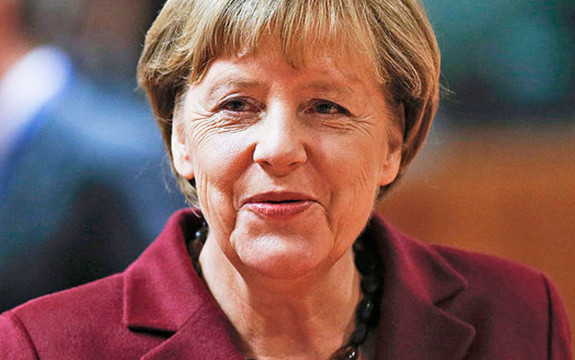Merkel's high-stakes stand

In Summary
Klaus Neumann, Swinburne University of Technology
This article first appeared on Inside Story.
Until quite recently, Angela Merkel was known for her propensity to dither. A word has even been coined to describe it: merkeln. It’s true that the German chancellor has a reputation, particularly outside Germany, for being one of the twenty-first century’s most powerful and successful political leaders, but during her ten years in office she has hardly ever led from the front. And the decisions she has eventually made haven’t revealed any particular vision for the future, nor have they seemed to be informed by an ideology or a personal politics.
All this has changed in recent weeks, and suddenly Merkel is barely recognisable. It’s not easy to pinpoint the date when the merkeln stopped, but the new Merkel was definitely on display as early as 31 August, during the traditional Sommerpressekonferenz – an extended interview during the summer break with members of the Berlin press gallery. Most of the encounter was taken up with a discussion Merkel initiated about the refugee crisis before she invited questions.
The number of asylum seekers reaching Germany via Greece, Macedonia, Serbia, Hungary and Austria had risen sharply over the previous two months. On 19 August, interior minister Thomas de Maizière said he expected 800,000 asylum seekers to arrive in 2015 – about twenty times as many as five years ago, and more than four times as many as last year.
On 21 and 22 August, a racist mob protested against a decision by the state government of Saxony to accommodate more than 500 asylum seekers in a former hardware store in Heidenau, a small town just south of the state capital, Dresden. During one of the violent demonstrations, thirty-one of the police protecting the asylum seeker accommodation were injured, one of them seriously.
When Merkel’s deputy, Social Democratic Party leader Sigmar Gabriel, visited Heidenau on 24 August he referred to the racists who had tried to attack the facility as Pack (scum) and demanded that they be locked up. He told reporters that it was important not to concede even one millimetre to “the most un-German characters I could imagine.” This was all the more important a signal because it came from a politician who only six months earlier had empathised with some of the concerns articulated by Pegida, a far-right protest movement that was particularly strong in Dresden.
Merkel too condemned the riots in Heidenau that day, declaring that Germany respected the dignity of all human beings and that she was appalled by the xenophobia of the demonstrators. But it took her another two days to visit Heidenau, where she told locals opposed to the asylum seeker accommodation that there would be “no tolerance towards those who question the dignity of others.”
During the Sommerpressekonferenz, Merkel repeated that sentence, and added: “There can be no apologies… The key is not to show even the slightest bit of understanding. No biographical experience, nothing that happened in the past, nothing, absolutely nothing justifies [their] stance.” These comments could be read as a belated criticism of Gabriel and others from her own party who had sought the dialogue with the protesters from Pegida despite its ultra-nationalism and xenophobia. They could also be read as a reference to lessons learnt by West German Christian Democrats in the early 1990s, when attempts to accommodate some of the positions advocated by the far-right Republikaner party resulted not only in boosting support for that party but also in a significant weakening of the Christian Democrats in the 1992 state elections in Baden-Württemberg.
By the end of August, thousands of refugees were arriving in Germany every day. Merkel said that she was proud of and grateful for Germans’ overwhelmingly positive response. She praised the journalists who were reporting that response in great detail, and urged them to keep doing so as a means of encouraging their audiences. And then she, too, provided the words of encouragement that shaped the discussion about Germany’s response to the refugee crisis. Commenting on the challenges posed by the unprecedented numbers arriving in Germany, she said, “Germany is a strong country. Our mantra… has to be: we have been able to do so much – we are able to do this.”
Who inspired Merkel’s “Wir schaffen das” (“We are able to do this”), which she has repeated many times since? The Economist tweeted, tongue in cheek, that Merkel’s optimism is that of Bob the Builder, who routinely asks his motley crew of helpers, “Can we fix it?” to which they respond in unison, “Yes we can!” Others have sought to credit Barack Obama with Merkel’s line. But neither the hero of the British animated television series nor the US president had a specific task in mind; their “yes we can” applies to all manner of challenges. Merkel’s “Wir schaffen das,” on the other hand, is very specific: Germany, she has been telling her somewhat sceptical domestic audience, will be able to cope with what is undoubtedly its biggest challenge in this century: the influx of possibly over a million irregular migrants this year.

